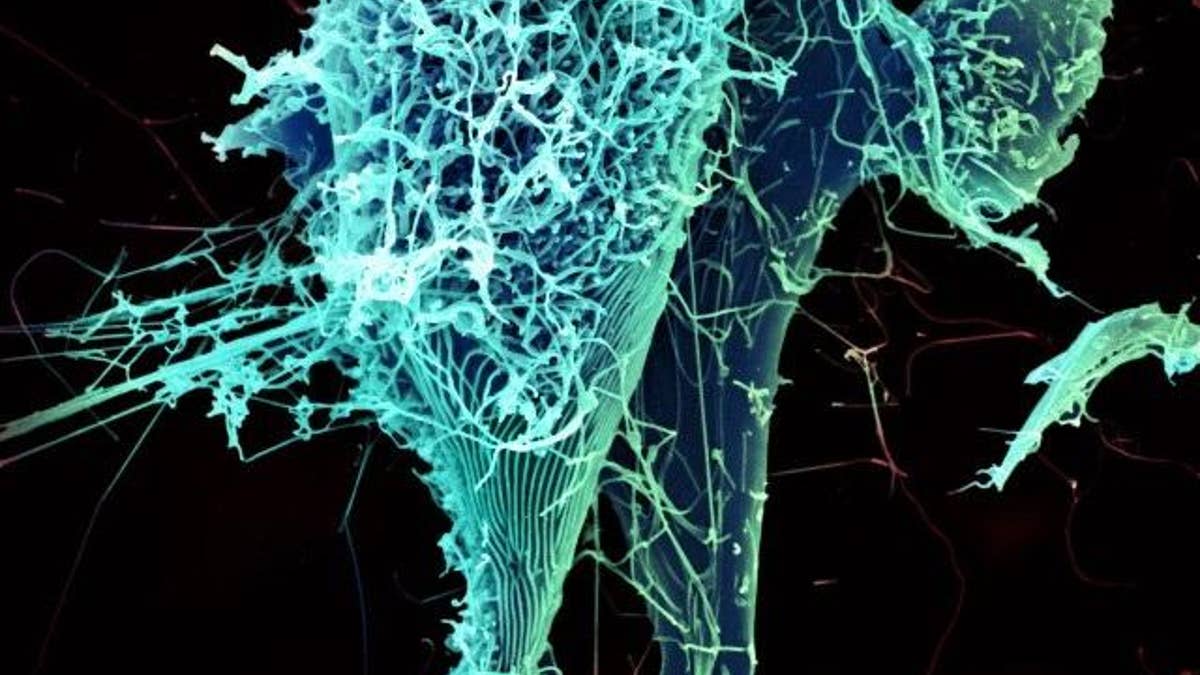
String-like Ebola virus particles are shedding from an infected cell in this electron micrograph. (NIAID)
Ebola has been found lingering in patients’ semen and breast milk several days after conventional tests can detect it in blood. But now, scientists have confirmed another likely haven for the virus, which ravaged West Africa and killed more than 10,000 people during the 2013-2016 outbreak: the lungs.
Although scientists have long suspected that Ebola hides and replicates in the lungs, until now, they haven’t had any evidence that’s the case.
The discovery, published Thursday in PLOS Pathogens, comes from the National Institute for Infectious Diseases in Rome, where scientists tracked the presence of Ebola virus genetic material in the lungs and blood of one patient during treatment and recovery. The patient became infected with Ebola in West Africa and was treated in Rome.
Study authors monitored the viral RNA fragments linked with Ebola replication in the patient’s lung levels and compared them with viral RNA levels in the patient’s blood. Their conclusion? The RNA and viral replication markers remained detectable in the lungs about five days after its presence disappeared in the blood. They noted RNA was present in both total and replication markers in the lungs, which supports the idea the virus was actively replicating.
"We demonstrated a long persistence EBOV replication markers within the respiratory tract, compared to plasma," the authors wrote. "This suggests a major role of the respiratory tissues in the pathogenesis of Ebola virus disease."
Scientists pointed out more research is needed to clarify the relationship between lung infection and Ebola, but they theorized that the lungs may provide RNA a safer environment than the blood, providing a place for the potentially deadly virus to hide out.
